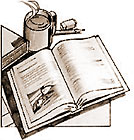
Atlas F1 Columnist
FERRARI FORMULA 1 RACING TEAM - Second EditionBy David Tremayne.
Published by Haynes.
Not much needs to be written about the team's huge fan base, or their long connection with the sport. They are the oldest team in Formula One, having been a part of the World Championship since the series was inaugurated in 1950, and the familiar red livery has become a symbol of the sport that is recognisable around the world, even to those without an interest in Grand Prix racing.
While Tremayne offers a brief overview of the team's past, it is really only there to place the rest of the book into context. This is very much a story about – perhaps even a celebration of – the Schumacher era. I tend to be a little skeptical about these kind of books, and I have probably become especially so since I began writing these reviews. (Maybe I'm becoming jaded!) All too often, they turn out to be hastily-written, PR-friendly paperweights that deserve, at the very most, to be read and then quietly discarded and forgotten, like a newspaper.
This book is not exactly earth-shattering, but then Tremayne has already set the bar rather highly for himself with his excellent books "The Science of Safety' and 'The Science of Speed', it is nonetheless reasonably good.
The story is one that has been told many times over - Ferrari makes cars that go like pigs, Ferrari gets Schumi on board, Ferrari end their off-shore design house experiment that was headed by John Barnard in England, Ferrari gets together the 'Dream Team' of Jean Todt, Ross Brawn, and Rory Byrne, Ferrari comes close in 1997, 1998, and 1999, and finally, Ferrari wins the World Championship in 2000. And, for good measure, 2001. The fans go wild. This book essentially re-tells the story, and unless you're one of the die-hard Tifosi, this might limit the book's appeal.
As well-trodden a path as it may be, Tremayne tells the story with rather more integrity than one usually expects to find in such books. While the book's content is, probably out of necessity, of a fairly 'entry-level' standard, it is still conveyed eloquently, intelligently, and comprehensively.
A nice touch are the little 'breakout' sections that pop up from time to time, addressing topics as varied as driving in the wet, Schumacher as compared to Prost and Senna, helmet designs, Luca di Montezemolo, and the demands that working in Formula One makes upon members of the team. Again, none of it is groundbreaking stuff, but it adds a nice dimension to the story that would probably be especially useful to somebody new-ish to the sport.
The pictures are good quality, well selected, and well reproduced, although they do get a little repetitive towards the end of the book. It must be something about all that red.
There are also a few production problems that I'd have expected to see sorted out before the book finally went to press, including a few typographic errors and a rather bizarre printing problem that may well be unique to my copy, but resulted in a large grey blur obliterating a sizeable chunk of text on one page.
All in all, there's little reason to buy this unless you are an absolute, die-hard fan of Schumacher-era Ferrari – and one that either doesn't mind retracing some familiar territory, or is a recent convert to the sport. If you do fit into this particular little demographic though, then this is a considerably better book than some of its rivals.
A few years ago, it was difficult to imagine Ferrari achieving the kind of dominance that they currently enjoy in the Formula One series. Victims largely of their own bureaucratic spiderwebs, the team was in such a state that more than one visitor to the factory marveled that the Prancing Horses managed to field a racing team at all.
Please Contact Us for permission to republish this or any other material from Atlas F1.
|
Volume 7, Issue 41
Articles
Villeneuve Strikes Back; Pollock Retaliates
Backyard at the Brickyard
Rating Montoya
Japanese GP Preview
The Japanese Grand Prix Preview
Technical Preview: Suzuka
Columns
Elsewhere in Racing
The Japanese Grand Prix Trivia Quiz
Bookworm Critique
The Weekly Grapevine
> Homepage |

